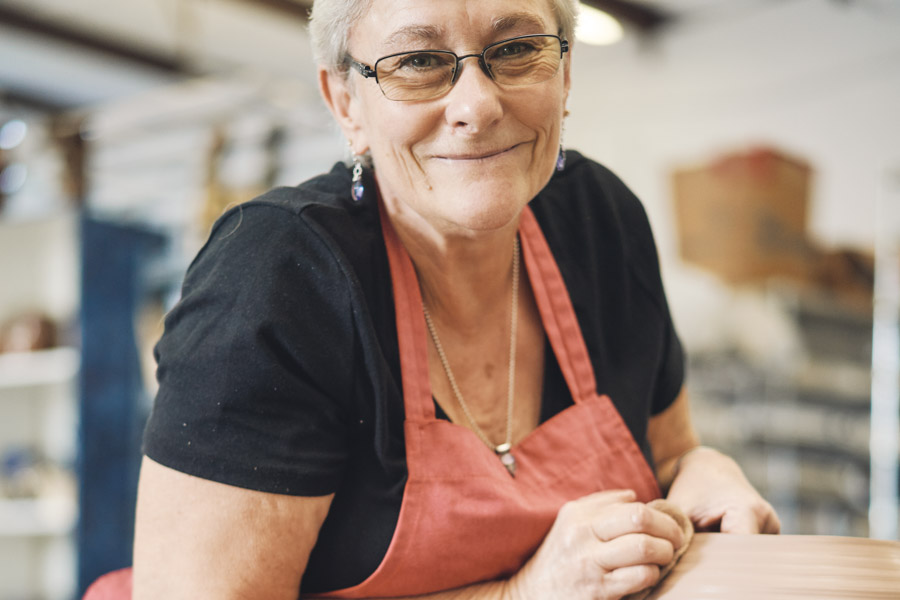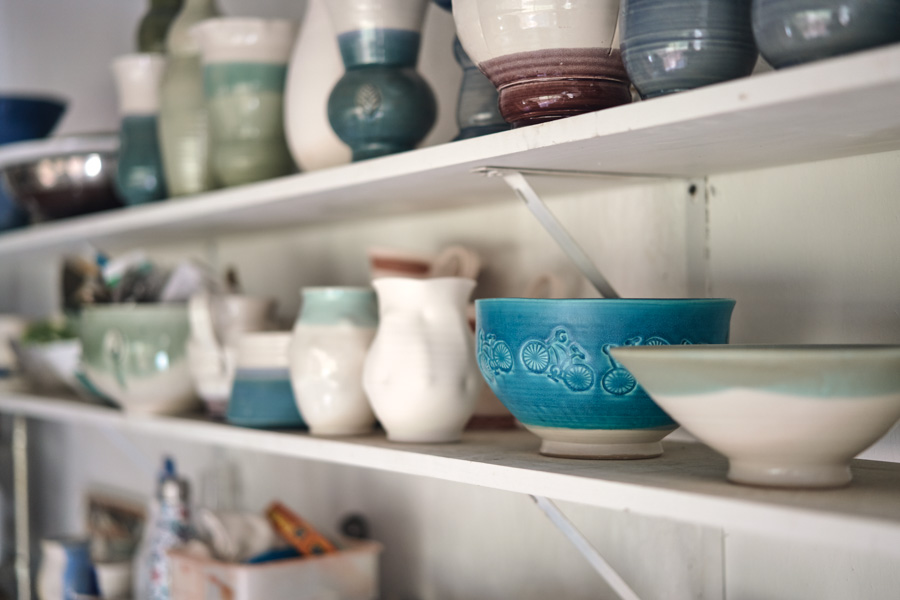Ladies, take the wheel. Too creative to be clean, these clay mavens enjoy getting their hands dirty and thumbs green with hand-thrown pottery and novelty nursery planters. Each of them share their creative process of wielding their artistic vessels and the earthen joy it brings.
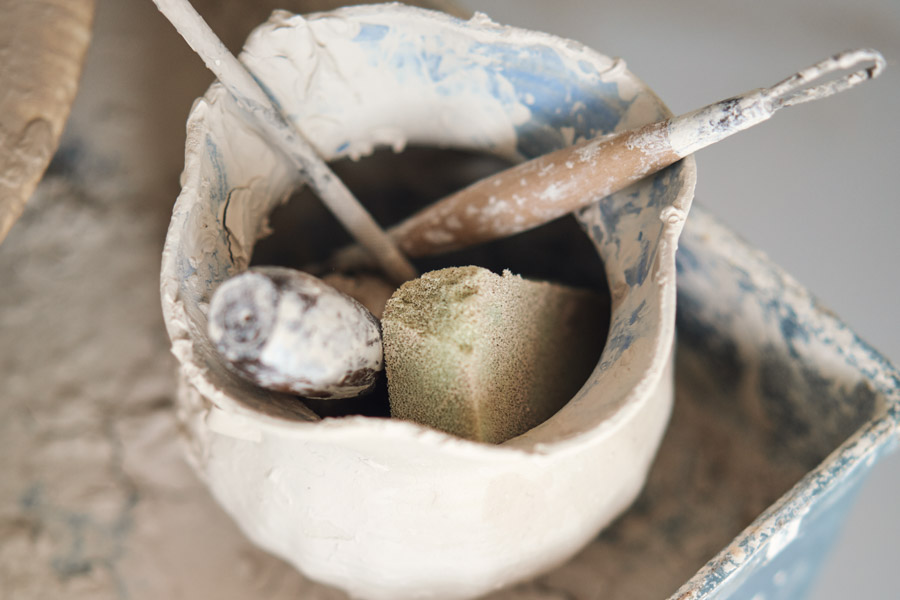
ALWAYS INSPIRED BY CERAMICS,colors, patterns and artifacts of the places she has lived and travelled, owner of Sarasota Green Pottery Anja Palombo takes special notice of the indigenous references, cultural associations and history an object may carry. “Many of my forms and decorations are inspired by the local landscape and flora,” the well-travelled curator says, mentioning her preference for white stoneware, formulated and mixed with different glazes to develop colors and surfaces that reflect the natural beauty of South Florida. “My studio is all open and looks out on palms, oaks and beautiful native vegetation. Walks on the beach, in any weather, also inspire the hues of my glazes.” Each pot is hand-thrown on the wheel, trimmed from the back and ornamented, slowly dried, bisque-fired, glazed and then finally glaze-fired. This process takes weeks, which is necessary to create her caliber of functional, handmade wares.
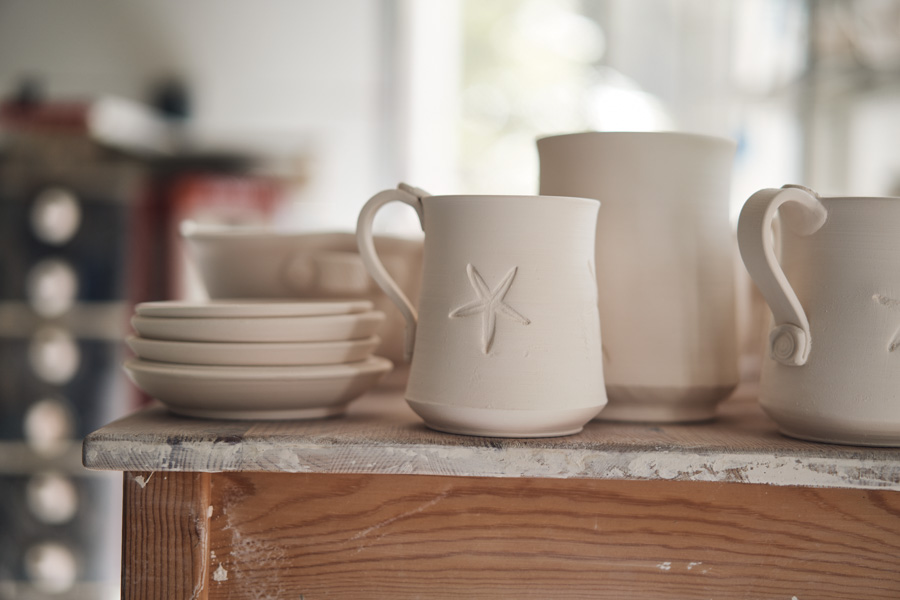
Palombo gets excited when people can use Sarasota Green Pottery in their everyday, and ensures this viability with wares that are food-, microwave- and dishwasher-safe. “Handmade objects are an invitation to be mindful, slow down and enjoy everyday life,” she says. “Making them means disengaging from mass consumption and disposable culture. Handcrafting help us to be more connected to objects, people and life.” Shoppers will find an ever-changing array of decorative, as well as utilitarian, pieces like bowls, plates, mugs, hanging planters, colanders, vases, canisters, pitchers, teapots and even small batches of Raku art pieces (a decorative ancient Japanese process). “I try to strike a balance between the simple and decorated, elegant and rustic, expressive and sleek,” Palombo says, which is probably why Sarasota Green Pottery has shipped and travelled as far away as Australia, Japan, England, Germany and every corner of the United States. “I love seeing people connect with design and seeing Sarasota Green mugs, vases, and other works go out into the world to be enjoyed,” she says. Shop Sarasota Green Pottery on its website and Etsy page, or at Ringling Museum of Art Museum Store, The Artful Giraffe, Clever Cup coffee shop and Tampa Bay Interiors.
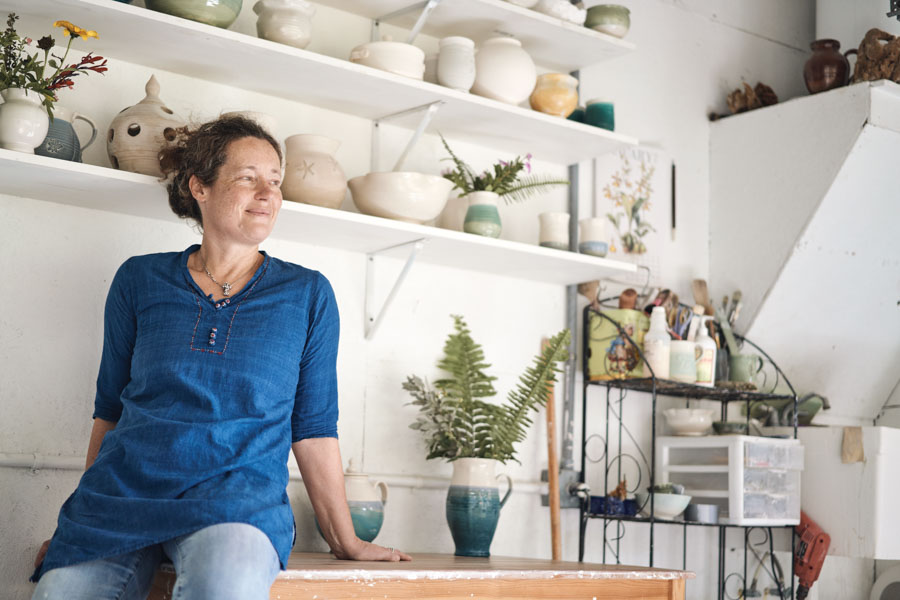
PRINCIPAL OF FALLING LEAVES POTTERY SUSAN PALMIERI started hand-building clay four decades ago as an avid gardener, realizing the necessity of having quality planters. Palmieri’s artistic process involves a flat slab with texture using plant materials and natural fabrics. “Some forms develop simply from draping over a support,” she says of her organic pieces that imply movement rather than structure. “The pocket wall pieces come about ‘blindly’ by stuffing fiber to support the clay while drying, and sometimes a form such as a bowl, is used when making a hanging fern basket.” Meant mainly for outdoor use, Palmieri’s planters use coils of clay, which line the bowl shape and create random gaps as drain holes for drainage. When hung from monofilament, this allows the plants to ebb and flow in the Gulf Coast breeze. Sphagnum moss is used to fill the basket, so species like blooming orchids and her favorite footed fern, Rabbit’s Foot, thrive in these planters, while hardy succulents and small Staghorn ferns do well in her pocket planters, and air plants get mounted in small, organic-shaped pieces.
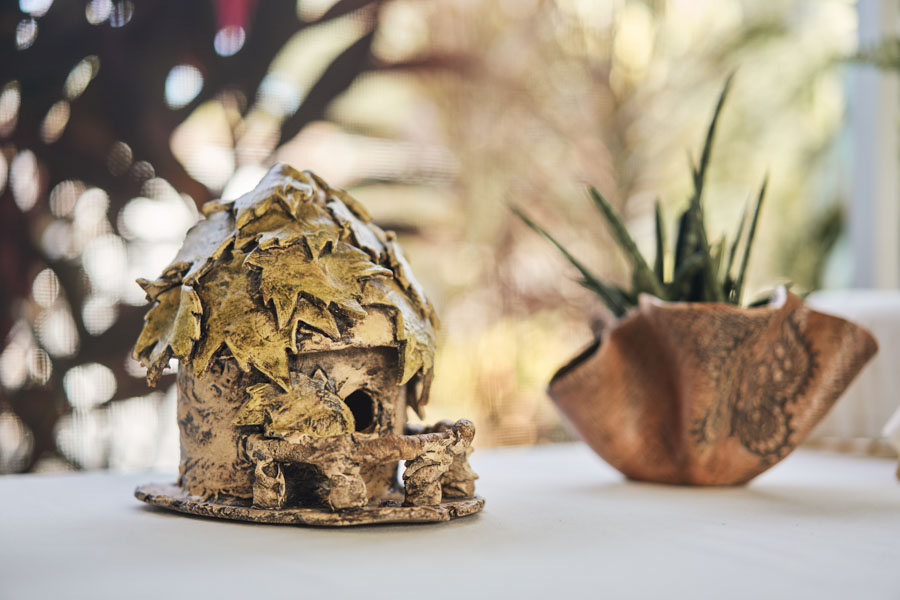
It was all about making freeform containers for plants, but, over time, birdhouses and tiles developed, with her latest endeavor venturing into turtle shell wall hangings. Palmieri’s involvement with the Sarasota Succulent Society and the Manatee River Garden Club provides opportunities for showcasing and selling her craft. This month, there are two special events not to be missed—the Garden Club will host a Flower Show on Saturday, February 9, 10am–4pm, and Sarasota Succulent Society’s President’s Day sale takes place on Saturday, February 16, 9am–1pm. “For the first time, we have invited students from Ringling Art School to this sale to exhibit and sell their work, as well as a young artist who does watercolor botanicals,” she says. Find Falling Leaves Pottery at Sarasota Succulent Society, 1310 38th St., Sarasota and Manatee River Garden Club, 3120 1st Ave. W, Bradenton, 941-746-8473.
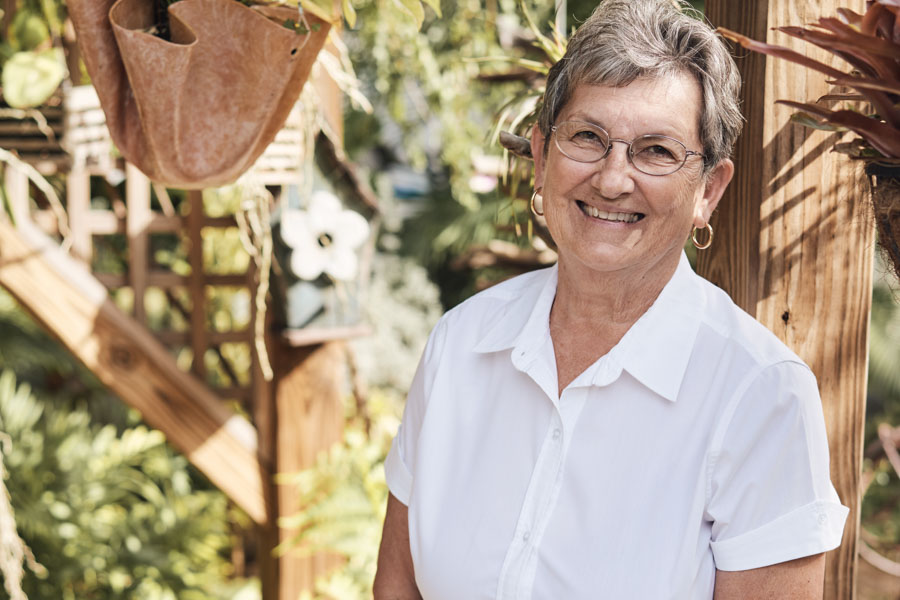
WATCHING A SKILLED POTTER “throwing” can look deceptively easy, but the process takes strength, coordination, patience and lots of practice to master. Making it look effortless for 42 years, owner of Carla’s Clay Carla O’Brien, notes the process and art of clay itself remains the least understood of all aspects of pottery. “It is far from instant gratification, which is why clay is so wonderfully therapeutic for today’s world,” she says. And the types of machinery, equipment and materials required is exactly why you’d come to an established studio like hers to start out your journey with pottery. Being a self-proclaimed “tool freak”, students gain access to O’Brien’s complete arsenal of bells and whistles, from a top-of-the-line potter wheel, to a slab roller that rolls out big beautiful blocks of clay and instruments for etching designs.
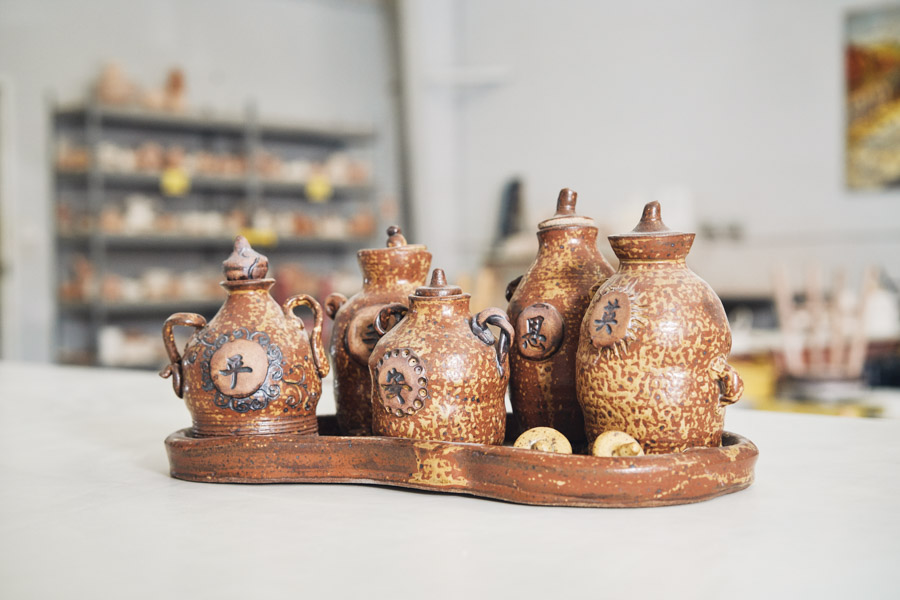
“We have classes that feature the different techniques for both hand-building and wheel-throwing (think Ghost with Demi Moore and Patrick Swayze), as well as sculpture offerings,” she explains. “I really want the student to leave with knowledge of this amazing medium and with whatever they had in mind—be it a functional ware for their kitchen, a whimsical jar, or sculpture for their wall or garden—when they walked through the door.” Projects are created first from powder mined from the ground and mixed with water, otherwise known as “clay body,” then laid out to dry (time depending on the thickness and size). Once fired long and slow at 1860 degrees F in a kiln for about 13 hours, it demands 24 hours of cooling itself down. Now it’s time to glaze (by brush or by dipping) and then one more firing in the kiln, this time depending on the glaze used (for stronger more durable finish, temps can arise 2160 F). Another 24 hours and the project is finally ready to take home. Carla’s Clay, 1733 Northgate Blvd., Sarasota, 941-359-2773.
